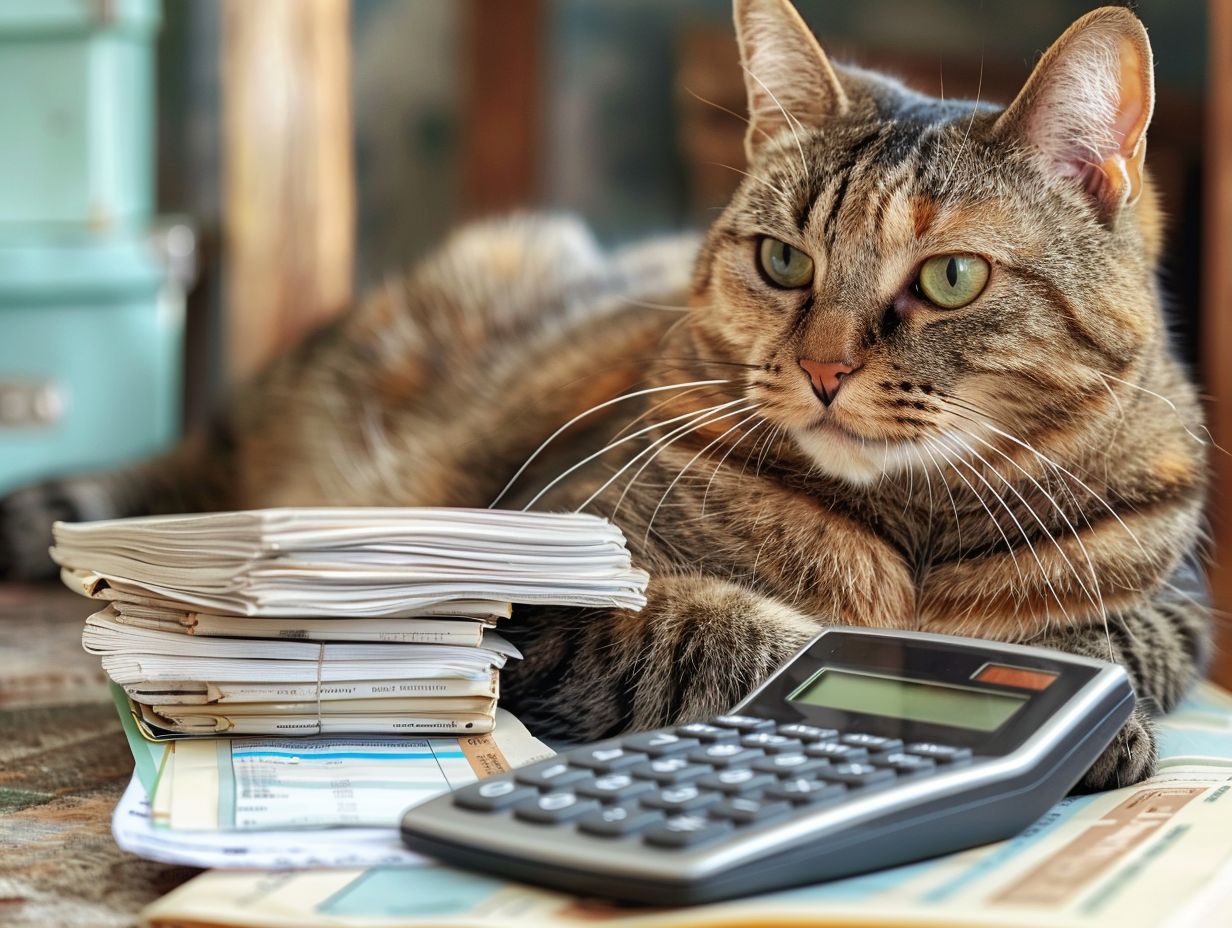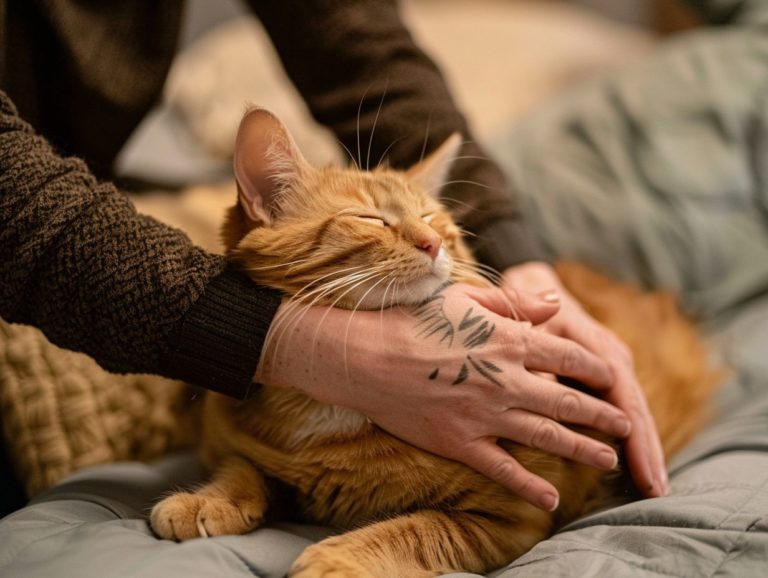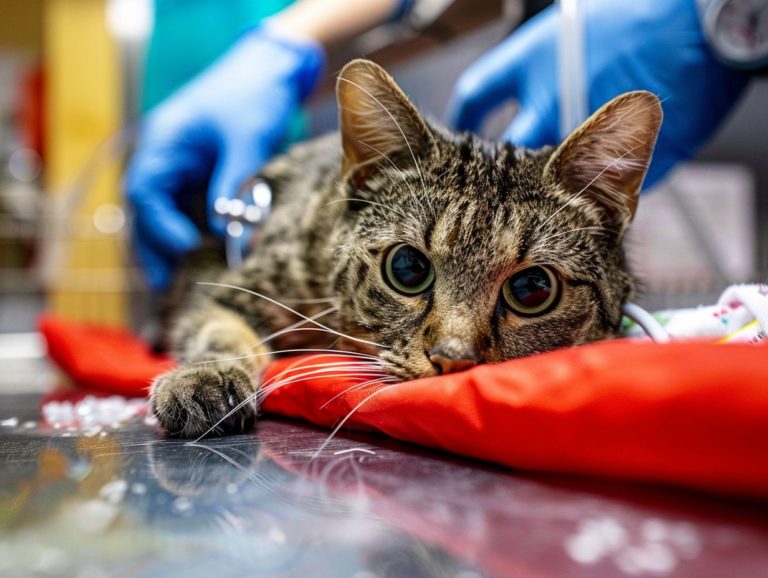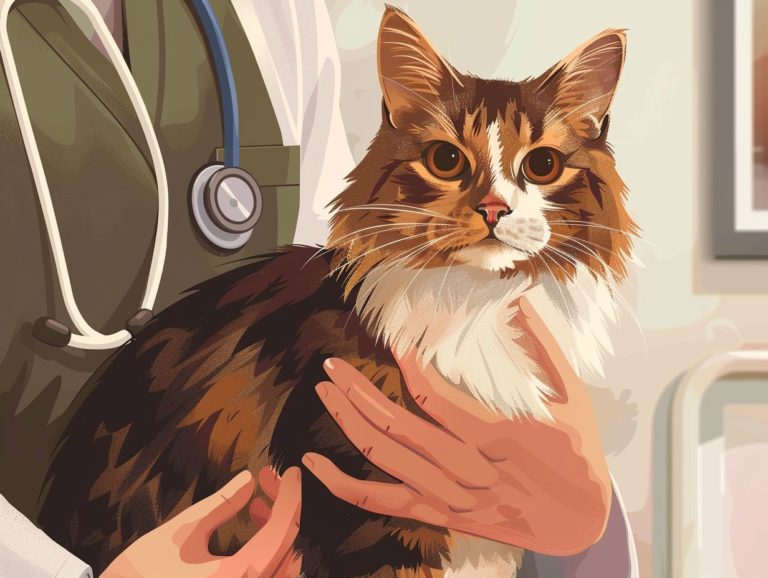How To Budget For A Cat Health Plan
This article discusses the significance and advantages of having a cat health plan, guidelines on creating a budget for a cat health plan, and the different types of cat health plans available, including insurance and savings plans, along with tips on selecting the right plan for your cat.”
Cat health plan tips can help you budget effectively.
Additionally, the article provides cost-saving strategies and resources to lower your cat’s healthcare expenses, as well as valuable information on budgeting for a cat health plan and caring for your cat to ensure the well-being of your beloved pet.
Key Takeaways:

Why a Cat Health Plan is Important
Ensuring good health and a long life for a cat requires a well-rounded cat health plan. This comprehensive plan encompasses regular veterinary care, emergency services, and financial considerations for pet healthcare.
Regular veterinary check-ups are crucial for early detection of illnesses and conditions, enabling timely intervention. Preventive measures like vaccinations and yearly examinations play a key role in safeguarding your cat from diseases. Medical care plans often incorporate nutritional guidance and behavioral advice to address all aspects of a cat’s well-being.
Including pet insurance in the cat health plan is essential to cover unforeseen costs that may arise throughout your cat’s life. A cat health plan is designed not only to address the physical health of your cat but also to promote their overall well-being and happiness.
The Benefits of Having a Cat Health Plan
Cat health plans provide several benefits, including financial protection through pet insurance, regular wellness screenings, preventive care, and coverage for unforeseen veterinary expenses resulting from health issues.
By investing in cat health plans, pet owners can have peace of mind knowing that their cats’ medical costs are taken care of in case of unexpected emergencies. Pet insurance ensures that cats receive timely medical attention without the need to worry about payment.
The wellness plans included in these packages promote regular check-ups and vaccinations, enabling early detection and treatment of any potential health issues. Under these plans, routine veterinary expenses contribute to the overall well-being and longevity of the cat.
Creating a Budget for a Cat Health Plan
When budgeting for a cat’s health plan, it is important to estimate pet costs, create a financial plan that includes calculating regular expenses and making a financial commitment, and possibly set up a special pet savings account for emergencies. Awareness of the financial aspects of pet ownership is crucial for ensuring proper care for one’s cat.
Budgeting for a cat’s health plan involves considering monthly expenses such as food, cat litter, grooming, and routine veterinary check-ups and vaccinations, as well as preparing for emergencies that may require higher spending. By allocating a portion of your monthly income to your cat’s personal fund, you can ensure their health and well-being. Opening a special pet savings account is advisable to have an emergency fund that can cover unexpected medical treatment costs.
Factors to Consider

Factors to consider when budgeting for a cat’s healthcare include pet insurance premiums, optional wellness add-ons, the costs of wellness screenings, and potential expenses for emergency veterinary care.
Cat insurance is advantageous for handling unforeseen medical costs for a pet. A comprehensive cat insurance policy can lower expenses related to emergency care and expensive treatments. Choosing wellness add-ons can assist in offsetting the expenses of regular check-ups and preventive care, fostering an overall healthy lifestyle for your cat. Wellness screenings are essential for early detection of health issues, potentially saving money in the future by addressing concerns before they escalate.
Types of Cat Health Plans
There are two main types of cat health plans: insurance-based plans that provide coverage for veterinary expenses and savings plans that allow pet owners to store funds for their cat’s healthcare needs.
Insurance-based cat health plans typically operate on a monthly premium basis, where the owner pays the insurance provider monthly and is covered for specific medical expenses, including routine check-ups, vaccinations, as well as unexpected illnesses or injuries. For a detailed Step-by-Step Guide to Enrolling in a Cat Health Plan, make sure to check out our comprehensive resource.
Savings plans function more like mutual savings accounts, with owners regularly depositing money to gradually build up a fund that can be used to cover any healthcare expenses that their cat may require.
Both types of plans aim to offer financial support and peace of mind to cat owners in managing their cat’s health.
Comparing Insurance and Savings Plans
When deciding between pet insurance and pet savings for a cat’s healthcare, one must consider various factors such as the extent of veterinary coverage, the monthly cost of pet insurance premiums, and the benefits of having a dedicated pet savings account for emergencies.
Pet insurance entails monthly payments in the form of premiums and serves as a method of covering specific veterinary treatments and procedures. On the other hand, a pet savings account functions as a budgeting tool, enabling you to set aside money for your cat’s medical expenses without the need for monthly premiums, though it requires gradually accumulating a sum over time.
Insurance plans may offer comprehensive coverage for accidents, illnesses, and wellness care, while savings accounts allow more control over fund allocation but could result in higher out-of-pocket expenses for major veterinary emergencies.
Choosing the Right Plan for Your Cat
Selecting the optimal health plan for your cat involves evaluating its specific needs, understanding your financial constraints, and determining the type of coverage required, whether through pet insurance or self-funded options.
Evaluating your cat’s needs includes taking into account factors such as age, breed, pre-existing conditions, and any common health risks associated with the breed. These considerations will help you identify the most suitable coverage options for your pet.
It is essential to find a balance between comprehensive coverage and affordability to ensure your cat receives necessary care when needed. By assessing the level of coverage necessary, you can find a suitable compromise that offers adequate protection against potential health issues while also remaining cost-effective.
Assessing Your Cat’s Needs and Budget

To establish the right plan for your cat, you must assess their healthcare needs, evaluate the expenses involved, consider the required financial commitment, and decide on the level of contributions towards a wellness plan if applicable.
Understanding your cat’s healthcare needs requires an assessment of their age, pre-existing conditions, and breed-specific needs. This information will help you develop a plan that meets your cat’s unique healthcare needs.
Understanding the expenses involved includes not just the price of insurance premiums, but the cost of potential out-of-pocket vet visits, medications, and emergency care. These costs need to be compared to your financial circumstances to ensure you can afford to pay for your cat’s healthcare without overextending your budget.
Tips for Saving Money on Cat Health Expenses
Saving on cat health bills can be achieved through various strategies, such as reducing pet food costs, setting aside funds for emergency veterinary care, and prioritizing preventive care to prevent expensive treatments for illnesses.
Buying pet food in bulk and choosing store brands over pricey prescription diets are simple ways to cut down on pet food expenses. Creating a dedicated account and regularly contributing a fixed amount each month for emergency veterinary care can provide financial security in case of unexpected health emergencies.
Regular veterinary check-ups and vaccinations are essential in preventing costly illnesses in the future, emphasizing the importance of maintaining up-to-date preventive care for your cat’s well-being and financial stability.
Cost-Saving Strategies and Resources
The three best ways to save on cat health costs include having pet insurance coverage as a buffer for expensive treatments, using parasite preventives to avoid more expensive treatments, and practicing responsible pet ownership to promote overall health.
Pet insurance can provide financial security by helping offset the costs of unexpected illnesses or accidents that may arise. Regular use of parasite preventives, such as flea and tick treatments, can prevent costly vet visits for related health issues. Responsible pet ownership involves providing a nutritious diet, regular exercise, and routine veterinary check-ups to maintain your cat’s health and catch potential problems early on, ultimately saving you money in the long run.
Frequently Asked Questions
How do I budget for a cat health plan?

To budget for a cat health plan, start by researching different plans and their costs. Consider your cat’s age, breed, and health history when selecting a plan. Then, determine your monthly budget for pet expenses and factor in the cost of the health plan. It may also be helpful to set aside a separate emergency fund specifically for your cat’s health needs.
What should I consider when choosing a cat health plan?
When choosing a cat health plan, consider your cat’s age, breed, and any existing health conditions. Look for plans that cover preventative care, routine check-ups, and potential emergencies. You should also consider the cost of the plan and your budget.
How much should I budget for a cat health plan?
The cost of a cat health plan can vary depending on factors such as your cat’s age, breed, and health history. On average, cat owners can expect to spend around $200-400 per year on basic preventative care plans. However, more comprehensive plans may cost up to $1000 per year.
Are there any ways to save on a cat health plan?
Some pet insurance companies offer discounts for enrolling multiple pets. You can also consider raising your deductible to lower your monthly premium. Additionally, some plans may offer discounts for certain breeds or for cats that are kept indoors.
Can I budget for unexpected cat health expenses?
While a cat health plan can help cover the costs of routine and preventative care, it may not cover unexpected expenses such as emergency surgeries or treatments. It’s important to have a separate emergency fund set aside for these situations. You can also consider adding a rider or supplemental plan to your existing cat health plan for additional coverage.
What should I do if I can’t afford a cat health plan?
If you are unable to afford a traditional cat health plan, there may be other options available. Some organizations and non-profits offer low-cost or free veterinary services for pet owners in need. You can also talk to your vet about payment plans or look into crowdfunding options to help cover your cat’s medical expenses.




